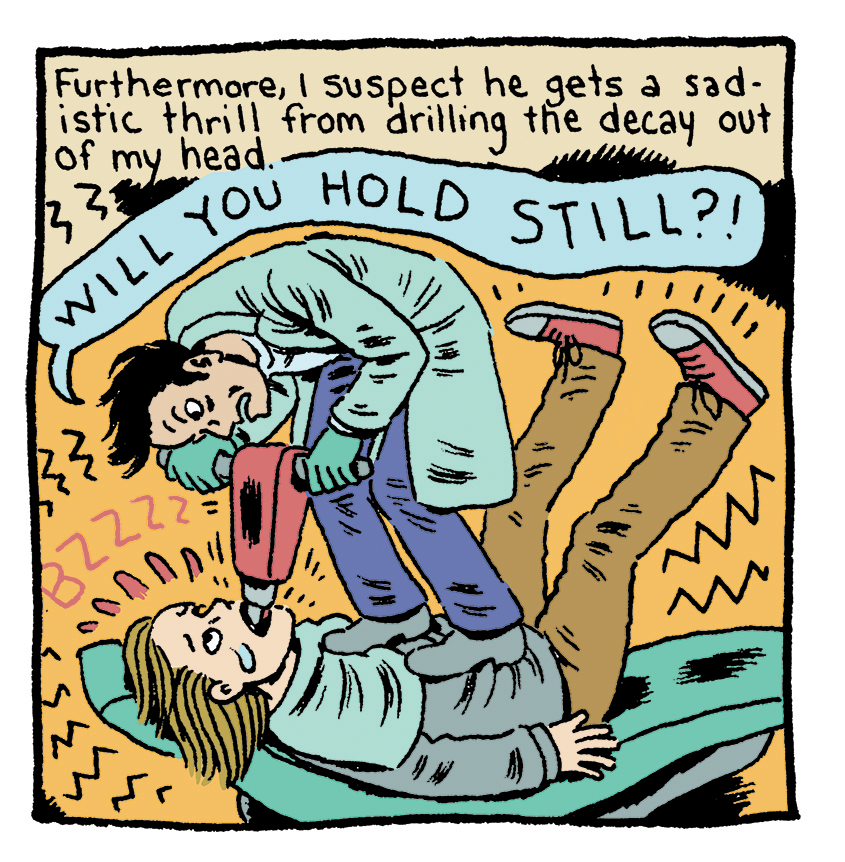
“Most people who do autobiography, myself included, it seems like they’re trying to work something out. Like we’re trying to do therapy on ourselves. In that light, it’s true: we’re sort of suffering over something and working on that.”
Three of Gabrielle Bell’s Fears:
Authority
Laundry card machines
Getting caught up in the question of non-fiction versus fiction
I’ve been reading Gabrielle Bell for years. Gabrielle Bell’s books, I mean, though sometimes it does feel like I am reading the person, like I am seeing right into her life and mind.
This is the trick that she’s perfected over time, starting in the late 1990s. When you read the cartoonist Gabrielle Bell’s stories, especially the more obviously autobiographical ones, you feel like she’s giving you the gift of her world, a candid, sometimes embarrassing, often entertaining very close look. But, of course, this “trick” is a mixture of a variety of different skills and talents, honed over time: drawing, styling, observing, shaping, inserting, withholding. Her books and stories regularly engage with the pleasures and anxieties, often mixed, of living in our contemporary world. A passion for and fear of the internet; an investment in and distaste for social interaction; a constantly ebbing-and-flowing sense of self.
Inappropriate, Bell’s latest book, is a collection of stories once again featuring this Gabrielle Bell persona, who keeps resisting, and being resisted by, the world around her, even as she’s all in, an Emersonian transparent eyeball set loose in a modern, mostly urban landscape. The book has stories featuring bed bugs, fishermen, talking rats, and, of course, our inscrutable narrator. In one comic, having slipped on an icy pavement, she is pinned under her bags of groceries, worrying that this is a punishment for having returned a bruised apple. The final panel pictures her still splayed on the ground, expressionless and looking up at the sky. “Or maybe,” the narrative reads, “there was some other more terrible thing I’d done that I’d forgotten all about.”
Talking to Gabrielle Bell both is and isn’t like stepping into one of her comics. There are no talking cats or bears to cuddle with. But you do get to experience what happens when you spend a few hours with someone who spends a big chunk of her waking life thinking about what it means to be a person in the world. OK, a particular kind of person; in this case, a forty-something-year-old cartoonist living in Brooklyn with a bunch of published books to her name and other people’s pets flitting in and out of her life and a love of prose fiction and a fear of laundry machine card machines. It felt, come to think of...
You have reached your article limit
Sign up for a digital subscription and continue reading all new issues, plus our entire archives, for just $1.50/month.
Already a subscriber? Sign in




